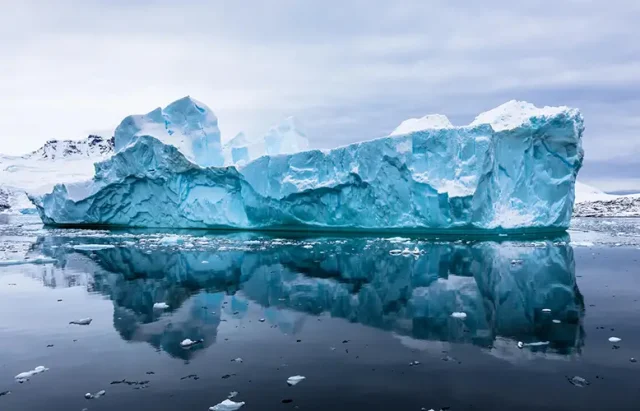
Climate change has created a new category of travel destinations that travelers feel urgently compelled to visit before they disappear forever. While some people might spend their leisure time with digital entertainment like nv online kasyno, others are making difficult decisions about whether to visit threatened natural wonders before climate change renders them inaccessible or unrecognizable.
Last-chance tourism presents a moral paradox where the very act of traveling to witness climate change impacts contributes to the carbon emissions accelerating environmental destruction. This dilemma forces travelers to grapple with complex questions about personal responsibility, environmental impact, and the value of witnessing disappearing natural heritage.
Understanding the Ecological Impact of Climate Tourism
Disappearing destinations attract millions of visitors annually, creating significant carbon footprints through long-distance flights, cruise ships, and ground transportation to remote locations. The irony that tourism accelerates the destruction tourists seek to witness creates profound ethical tensions for environmentally conscious travelers.
Aviation represents the largest environmental impact for most last-chance tourism, with flights to Arctic regions or remote coral reef locations generating substantial per-passenger carbon emissions. A single round-trip flight from Europe to Antarctica can produce more carbon emissions than an individual’s entire annual carbon budget under climate sustainability targets.
Tourism infrastructure development in fragile environments often causes additional ecological damage beyond transportation emissions. Hotels, roads, and visitor facilities in pristine areas can disrupt local ecosystems, fragment wildlife habitats, and introduce pollution that compounds climate change pressures on already vulnerable environments.
The Psychology Behind Urgency-Driven Travel Decisions
Ethical travel considerations become complicated when travelers face psychological pressure from marketing messages emphasizing the limited time remaining to witness natural wonders. This urgency can override rational decision-making about environmental impact and lead to impulsive travel choices that contradict stated environmental values.
Fear of missing out (FOMO) drives many last-chance tourism decisions, creating emotional responses that prioritize immediate experience over long-term consequences. Tourism operators often exploit these emotions through marketing campaigns that emphasize scarcity and imminent loss rather than sustainable travel alternatives.
The desire to witness climate change impacts firsthand can stem from genuine concern, but it can also reflect privileged consumption patterns that treat environmental destruction as spectacle rather than tragedy. Understanding these motivations helps travelers make more conscious decisions about their travel priorities and ecological impact.
| Destination Type | Primary Threat | Tourism Impact | Visitor Numbers |
| Arctic Glaciers | Ice melt from warming | High carbon transport | 100,000+ annually |
| Coral Reefs | Ocean acidification | Boat damage, pollution | 2M+ annually |
| Small Islands | Sea level rise | Infrastructure strain | Variable |
| Alpine Glaciers | Temperature increase | Moderate accessibility | 500,000+ annually |
This comparison reveals how different threatened environments face varying levels of tourism pressure. The relationship between environmental vulnerability and visitor accessibility creates different ethical considerations for each destination type.
Alternative Approaches to Experiencing Environmental Change
Responsible ecological engagement doesn’t require physically visiting every threatened ecosystem. Virtual reality technologies, documentary films, and local education can provide meaningful connections to climate change impacts without contributing to transportation emissions that accelerate environmental destruction.
Local natural volunteering offers hands-on experience with conservation efforts while supporting restoration projects in accessible locations. Many travelers find greater satisfaction in contributing to environmental solutions rather than simply witnessing environmental problems during brief tourist visits.
Sustainable alternatives to last-chance tourism:
- Virtual reality experiences and high-quality documentaries that showcase threatened environments without travel emissions
- Local volunteering and restoration projects that provide hands-on conservation experience
- Financial donations to conservation organizations working directly to protect threatened ecosystems
- Climate activism and policy advocacy that addresses root causes of environmental destruction
- Lifestyle changes that reduce personal carbon footprint and model sustainable behavior for others
These alternatives allow people to engage meaningfully with environmental issues while maintaining consistency between values and actions. They often provide deeper, more lasting satisfaction than brief tourism experiences while contributing more effectively to nature protection.
Responsible Tourism Practices for Unavoidable Travel
When travel to threatened environments becomes necessary for research, education, or other compelling reasons, specific practices can minimize environmental impact while maximizing conservation benefits. These approaches prioritize nature protection over tourist convenience or comfort.
Carbon offset programs, while imperfect, can help neutralize transportation emissions when travelers choose high-quality offset projects that provide verifiable environmental benefits. However, offsets should supplement rather than replace efforts to minimize emissions through efficient transportation choices and extended stay durations.
Choosing tour operators with genuine commitments involves researching company practices, certification programs, and conservation contributions beyond marketing claims. Operators that employ local guides, support community conservation projects, and limit group sizes demonstrate more serious environmental responsibility.
Guidelines for responsible climate-sensitive travel:
- Extended duration visits that justify transportation emissions through longer stays and deeper engagement
- Small group travel that minimizes infrastructure impact and allows for more educational interaction
- Local guide employment that supports community economies and provides authentic knowledge
- Strict leave-no-trace principles including waste reduction and wildlife disturbance avoidance
- Active contribution to conservation efforts through volunteer work or financial support during visits
These practices acknowledge that some travel to threatened environments may be justified while emphasizing responsibility and impact minimization. The goal is ensuring that necessary travel contributes to rather than detracts from environmental protection efforts.
Building Long-Term Environmental Advocacy Through Experience
The most ethical approach to last-chance tourism involves transforming brief travel experiences into lasting environmental advocacy and behavior change. Travelers who witness environmental destruction should feel obligated to become active environmental advocates upon returning home.
Documentation and storytelling can amplify the impact of environmental travel by sharing experiences with broader audiences who cannot visit threatened locations themselves. High-quality photography, writing, and speaking engagements can inspire environmental action among people who never travel to remote locations.
Political engagement represents the most important outcome of environmental travel experiences. Travelers who witness climate impacts should channel their experiences into support for environmental policies, sustainable energy transitions, and international climate cooperation that addresses root causes of ecological destruction.
Make Thoughtful Choices About Environmental Travel
Last-chance tourism presents complex ethical challenges that require honest self-reflection about motivations, impact, and long-term consequences. The most responsible approach often involves supporting threatened environments through means other than tourism while reserving travel for situations where it genuinely contributes to conservation efforts.
When eco-travel becomes necessary, travelers bear responsibility for minimizing impact, supporting local communities, and translating experiences into lasting environmental advocacy. The goal should be ensuring that any travel to threatened environments contributes to their protection rather than acceleration of their destruction.





